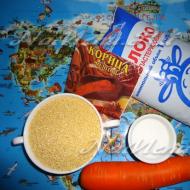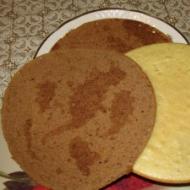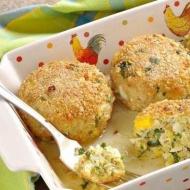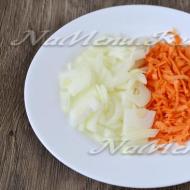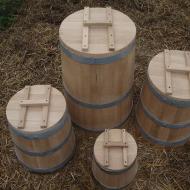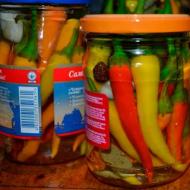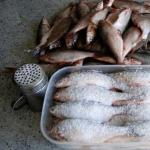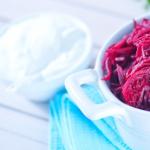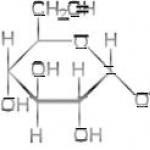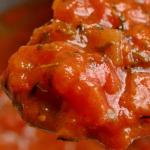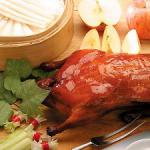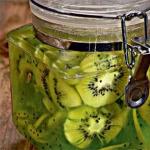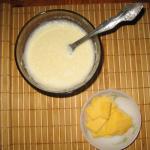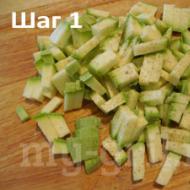
Sea buckthorn - beneficial properties. Sea buckthorn oil recipes. Is it possible to eat sea buckthorn with seeds? Sea buckthorn seeds
9Dear readers, today I invite you to treat yourself to simple recipes for sea buckthorn masks.
For all representatives of the fair half, it is always important not only to feel young and energetic, but also to groom yourself in such a way as to attract many admiring glances! And how can such results be achieved?
First of all, you need to take care of your facial skin and regularly give it tonic spa treatments in the form of wellness masks. To do this, it is not necessary to buy a lot of expensive and widely advertised products, the effectiveness of which still needs to be proven. You can use time-tested recipes and make your own sea buckthorn masks.
What properties do sea buckthorn masks have?

The chemical composition of sea buckthorn is unique, therefore the masks made from it have numerous medicinal and cosmetic properties:
- carotene moisturizes and rejuvenates the skin;
- vitamins E and B renew the skin and slow down the aging process;
- sterols fight skin problems such as pimples, blackheads, acne;
- serotonin works to improve blood circulation;
- phospholipids help normalize fat metabolism;
- fruit acids significantly improve complexion and eliminate pigmentation;
- Vitamin C promotes collagen production and makes the skin firmer and tighter.
Thanks to all these wonderful properties, sea buckthorn masks become a universal skin care product.
Preparing face masks at home - choosing the appropriate recipe. Recommendations for the use of such masks.
A face mask should be chosen taking into account your skin type and existing problems. Before applying the mask, do a test to see if you are allergic to sea buckthorn.
My advice: I love freezing all the berries and using them throughout the year. I drew attention to the following: if you use frozen berries, thaw them a little at room temperature and then scald them with boiling water and then prepare cosmetic masks.
In this case, the skin coloring will not be as intense. And there will be significantly fewer allergic reactions.
It is best to use such masks after steam baths. The skin must be prepared. Warm skin and a warm face will more optimally absorb all the healing properties of the sea buckthorn mask.
It is better to carry out a course of such masks 2 times a week. I sometimes spend every day for 3-5 days. It is also very important to know that if you have open wounds on the skin of your face, then under no circumstances should you apply sea buckthorn masks! In principle, this applies to many masks. And be careful if you have sensitive skin.
Before you start preparing any sea buckthorn mask, you will have to crush the elastic berries; this process can be greatly simplified. If you have fresh berries, you can freeze them a little and then pour boiling water over them. Now you can knead them quickly and easily.
Sea buckthorn recipe for oily skin.
Ingredients:
- Sea buckthorn – 150 gr.;
- Low-fat cottage cheese – 50 gr.;
- Cream – 2 tbsp. spoons.
First, mash the sea buckthorn berries, add cream and cottage cheese. Now mix all the ingredients thoroughly. Apply the resulting mixture to the skin and keep it on for 20 minutes. When finished, wash off the mask with warm water and rinse your face with cool water.
What to do if your facial skin has lost its elasticity? Mask recipe.
Ingredients:
- Sea buckthorn – 200 gr.;
- Olive oil – 2 tbsp. spoons;
- Wheat sprouts – 50 gr.
Mash sea buckthorn berries and wheat sprouts to a paste and add olive oil. Leave the mask on for 20 minutes and wash off. To achieve the desired result, the procedure should be carried out twice a week.
Sea buckthorn face mask for dry skin types.
Ingredients:
- Sea buckthorn – 100 gr.;
- Sour cream – 100 gr.
Make sea buckthorn puree from the berries and add sour cream to it, mix and spread the resulting mask on your face in a thick layer. You need to keep this mixture for about 20 minutes. We wash off our healing potion with warm water. This recipe will refresh your skin and eliminate signs of fatigue.
A universal mask made from sea buckthorn berries will help you take care of your skin.
Ingredients:
- Sea buckthorn – 100 gr.;
- Raw egg white – 1 pc.;
- Honey – 2 teaspoons;
- Oat flour – 30 gr.
Mix crushed sea buckthorn berries with honey and protein, stir until smooth and gradually add oatmeal. This mask can be applied not only to the face, but also to the neck. Leave for 20 minutes. The composition of this mask has a beneficial effect on skin of any type, nourishes it and has a moisturizing effect.
Vitamin mask for facial skin made from sea buckthorn.
Ingredients:
- Sea buckthorn juice – 2 teaspoons;
- Tea brewing – 1 teaspoon;
- Vitamin A – 1 teaspoon.
To get juice from berries, you need to mash them and strain the resulting mixture. Add tea leaves and vitamin A to the juice. You can wash off this mask with water diluted with a light decoction of parsley.
When caring for your skin, nourishing masks are very important.
They are great for both young and aged skin. The properties of such masks help prevent premature aging of the skin, and also get rid of existing shallow wrinkles.

Recipe for a nourishing sea buckthorn mask.
Ingredients:
- Flaxseed oil or flax decoction – 50 g;
- Sea buckthorn berries – 100 gr.;
- Ground rolled oats – 50 gr.
All of the above components must be mixed well. This mask can be applied to the face, neck and décolleté area.
Sea buckthorn is a shrub or small tree reaching a height of three to four meters with branches covered with small thorns and green, slightly elongated leaves.
Sea buckthorn is wind pollinated and blooms in late spring. The fruits are small (up to 8-10 mm), orange-yellow or red-orange, oval in shape. The name for this plant “Sea Buckthorn” is very apt, since its berries are on very short stalks and sit very closely on the branches, as if clinging to them. The berries have a rather pleasant sweet and sour taste, as well as a peculiar, unique aroma that vaguely resembles pineapple. This is why sea buckthorn is sometimes called the northern, or Siberian, pineapple.
This plant has a fairly wide distribution area: from Western and Eastern Siberia to the southern regions of the European part of Russia, Moldova, the Caucasus and Ukraine.
Even during the heyday of Ancient Greece, horses were given a strong decoction of sea buckthorn leaves and branches to drink. This was done to keep their skin healthy and shiny.
Useful properties of sea buckthorn
Sea buckthorn berries are incredibly rich in vitamins; flavonoids, folic acid, carotenoids, betaine, choline, coumarins, glucose, fructose and phospholipids. Berries contain a fairly large amount of acids, such as malic acid, citric acid, caffeic acid and tartaric acid. The berries are also rich in tannins. This modest-looking berry is not deprived of macroelements and microelements, such as sodium, magnesium, iron, silicon, aluminum, lead, nickel, manganese, strontium and molybdenum.
The bark of the branches hides a significant amount of serotonin, which has a very beneficial effect on the central nervous system and also inhibits the growth of malignant tumors. Hidden in the leaves of this unsightly plant is real wealth in the form of ascorbic, oleanolic and ursolic acid.
Sea buckthorn has healing properties. It is able to strengthen the walls of blood vessels and make them less permeable, improve tissue metabolism, and has an antioxidant effect (prevents tissue oxidation, and therefore aging).
Sea buckthorn relieves tissue inflammation and promotes wound healing; it can improve the course of any chronic disease due to the large amount of vitamins it contains. Sea buckthorn bark has antitumor properties.
Sea buckthorn is also used internally to treat diseases of the cardiovascular system, chronic diseases, blood diseases, gastritis, gastric and duodenal ulcers, and vitamin deficiency.
For anemia and exhaustion, sea buckthorn fruits are used as food in any form. The leaves and young twigs are brewed and drunk as tea.
Almost everyone, without exception, knows about the miraculous sea buckthorn oil, which is “extracted” from the fruit, and the seeds of the berries contain much more of it than the pulp. The oil is very effective in the treatment of radiation injuries to the skin, thermal or chemical burns and in the treatment of trophic ulcers. Thanks to the truly magical and miraculous powers of sea buckthorn, doctors resist gastric and duodenal ulcers, stomatitis and pulpitis. Sea buckthorn oil cures laryngitis and pharyngitis instantly. This unsurpassed remedy is suitable for injuries and defects of the cornea, conjunctivitis, and radiation burns of the eyes. Many dermatologists recommend sea buckthorn oil to enhance hair growth and in cases of certain skin diseases.
Sea buckthorn oil is used to treat burns, bedsores, frostbite, senile cataracts, gastritis, diabetes, anemia, hypertension, various ulcers, and atherosclerosis.
Inhalations of sea buckthorn oil are used to prevent occupational respiratory diseases for those working in hazardous industries.
It has long been established that preparations made on the basis of sea buckthorn oil can greatly improve the body’s tolerance to certain antitumor drugs, and sometimes even enhance their effect.
The most valuable content of sea buckthorn is tocopherol (vitamin E), which stimulates the functioning of all internal organs and endocrine glands. If there is a lack of this vitamin, there is nothing to count on for active longevity, male and female strength, or reproductive ability. Together with vitamin A, vitamin E stimulates the immune system. That is why it is very good for the expectant mother to “refuel” these substances for future use, ideally even before pregnancy. If there is not enough vitamin E in the body of a pregnant woman, there is a danger of spontaneous miscarriage, prematurity, or a gene shift leading to the birth of a freak. 20 -30 g (4 - 5 teaspoons) per day of sea buckthorn oil provides the daily requirement of vitamin E.
Sea buckthorn will insure both a pregnant woman and a newborn. It is recommended to add sea buckthorn juice to the milk of a nursing mother from the age of one month onwards. A few drops of juice are added to the baby's complementary foods, and if the juice is absorbed normally, the dose is quickly increased.
Dangerous properties of sea buckthorn
Sea buckthorn has some contraindications. Fortunately, there are very few of them. First of all, it is worth remembering that it is a product with a high content of various biologically active substances. This berry contains a lot of carotene, which can cause an allergic reaction in the presence of serious immune disorders.
Sea buckthorn should also be used with caution by people with liver diseases, pancreatitis (inflammation of the pancreas), cholecystitis (inflammation of the gallbladder) and inflammation of the duodenum, since sea buckthorn contains many acids. We must remember that sea buckthorn increases the acidity of urine, so it is best to avoid it if you have urolithiasis.
Many people love sea buckthorn, but are afraid to eat it with seeds, believing that they are harmful to the intestines. Is it so? Of course not.
Why you shouldn't spit out the bones
Sea buckthorn pulp is rich in ascorbic acid, as well as vitamins A and E. The fruits contain B vitamins in smaller quantities. Tannins, organic acids, pectins, glycosides and fatty oils were found in the pulp.
Fatty acids accumulate both in the fruit pulp and in the seeds. Sea buckthorn seeds contain 12% unsaturated fatty acids. It is from them that the very oil that is used in medicine for many diseases is made. There is absolutely no point in spitting out the seeds; in this case, the body is deprived of very valuable substances.
Women use sea buckthorn oil for hair and skin. They make masks, homemade creams, etc. with it. However, what goes directly inside the body is much healthier for the skin and hair. Therefore, those representatives of the fair sex who care about their appearance should definitely eat sea buckthorn along with the seeds.
Many people still believe that eating sea buckthorn along with its seeds can cause appendicitis. This belief comes from ancient times, when people did not really know where inflammation of the cecum comes from. Modern scientists have proven that the causes of appendicitis lie in intestinal diseases, but not in eating the seeds of any fruit.
Who should not eat sea buckthorn
Fresh sea buckthorn should not be eaten if you have ulcers or gastritis with high acidity. It is also contraindicated for inflammation of the pancreas. If there are stones in the gall bladder, then eating sea buckthorn is undesirable, except in small quantities. It is prohibited for kidney and bladder stones.
Sea buckthorn with seeds during pregnancy and lactation
Pregnant women are not only allowed to eat sea buckthorn with seeds, but also necessary. After all, the active substances contained in fruits and seeds are extremely beneficial for the unborn baby. As for nursing mothers, they should remember about the laxative effect of sea buckthorn. The baby may develop diarrhea if the mother gets too carried away with her. In addition, sea buckthorn sometimes causes allergies. Therefore, nursing mothers can eat sea buckthorn, but only in small quantities.
By the end of September and beginning of October, one of the most valuable gifts of autumn - sea buckthorn - ripens. The beneficial properties and contraindications for the use of its fruits and leaves have long been known to fans of traditional medicine. This orange sour berry has long gained a well-deserved reputation as a healer and healer of many diseases. Today, many medicines, oils, tinctures, ointments, and cosmetics are produced based on sea buckthorn. Bark, leaves, shoots, seeds, berries - everything goes into use, all parts of this tree can be useful if you know how to handle them.
The botanical name of this tree (or dioecious shrub) is buckthorn. Depending on where it grows, it can strengthen and grow to the size of a real tree or remain a low shrub. Unpretentious, frost-resistant, practically not afraid of pests, grows anywhere, on any soil. Under comfortable conditions, it can quietly grow and bear fruit for up to 100 years.
Its sour, astringent fruits are unlikely to be to your taste if you eat them just like that. But jams, marmalades, juices, jelly, confectionery or baked goods with this berry are pleasant and useful for adults and children. Alcoholic drinks, tinctures, decoctions, and teas are made on its basis. Let's take a closer look at the features of sea buckthorn, areas of application, as well as possible limitations.
Sea buckthorn jam, photo:

Sea buckthorn - benefits and harm
The list of beneficial qualities of sea buckthorn is very wide: it increases immunity, gives strength, fills the body with vigor and vitality. It contains many vitamins, microelements, and biologically active components.
Sea buckthorn berries - beneficial qualities and harm
Fresh, well-ripened berries are a real storehouse of healing substances. They saturate our body with vitamins, flavonoids, phospholipids, beneficial acids, tannins, macro- and microelements, fructose, and glucose. This is an excellent preventive and therapeutic agent for heart and vascular diseases. Eating sea buckthorn fruits (in various forms) strengthens the immune system and has a beneficial effect on the heart and blood vessels (prevention of stroke, heart attack). Recovery from illness is much better if you consume 50 or 100 g of fruits daily. Since the berries have a sour taste, it is better to take them with honey and then wash them down with clean water.
As an additional auxiliary agent in the complex treatment of stomach cancer, you can take 1 tbsp. spoon of berries, three times a day. In cases of impaired fertility in men and women, sea buckthorn fruits should be taken daily, for a long time, approximately 30-50 g (at a time) will be enough. To always have this natural medicine on hand, the berries can be frozen for the winter - they are in no way inferior to fresh ones in terms of usefulness. In general, you should know that the valuable qualities of sea buckthorn are not lost when the fruit is frozen or heat-treated.

Sea buckthorn oil - properties and uses
This unique remedy is equally successfully used in alternative and official medicine. of sea buckthorn oil are truly limitless – and that’s a fact. The oil is used both internally and externally; if there is no opportunity or equipment for self-squeezing, then you can buy a ready-made product at the pharmacy.
Restrictions on the use of sea buckthorn oil are minimal, but they exist:
- It is not recommended to use it if you are hypersensitive.
- It should not be taken orally by those who are currently diagnosed with an acute form of diseases of the digestive system.

Ingestion of sea buckthorn oil
- If a person suffers from gastritis or a stomach ulcer, then he is recommended (but not during an exacerbation) to consume 1 tsp. of this product 30 minutes before meals - this should be done three times a day. After long-term use of antibiotics or other toxic “attack” on the liver and kidneys, a similar use of oil would be appropriate.
- For a malignant tumor of the stomach, it is strongly recommended to consume 0.5 tsp as an adjuvant (especially during radiation and chemotherapy). product three times a day before meals.
- If you have a sore throat, a sore throat or inflamed tonsils, 0.5 tsp. The oil should be diluted in 200 g of warm milk, consumed orally in the morning and also in the evening, before breakfast or dinner.
Sea buckthorn oil externally
- The oil is successfully used to accelerate skin regeneration after burns, eliminate the effects of frostbite (at the healing stage), and to treat bedsores.
- It also helps with “female” diseases; sometimes 10 days are enough to cure cervical erosion (or significantly stop the manifestation of the disease).
- This product also helps to cure colpitis; tampons soaked in oil are used for these purposes.
- For sinusitis or a runny nose, you can drip a couple of drops of oil into each nostril, two to three times a day.
- Additionally, it can be used as inhalation for respiratory diseases (3 tablespoons per 1 liter of water).
- At night, you can rub the oil on your chest area when you have a cough or severe bronchitis, and if you mix it with camphor, the effect will be even better.
- For various skin irritations, diaper rash, dermatitis, it can be used to lubricate the affected areas.
- Even with eye diseases (corneal injuries, cataracts, various keratitis), it is recommended to instill 1-2 drops of sea buckthorn oil.
- In case of severe inflammation of the tonsils, as well as after their removal, the throat can be lubricated with pure oil - the disease will subside, and the operated areas will heal faster.
In cosmetology
- The oil can be used instead of face cream if the skin is excessively dry; it is better to do this before bed.
- Oil applications have a good effect on irritation, pimples or redness.
- It is an ideal product for massage, does not leave a greasy layer, and warms up the skin and muscles well.
- If your nails have become brittle or peeling, then oil baths will help solve this problem.
- Oil applied to the roots and length also helps with brittleness and hair loss; a light massage of the scalp will help better absorb the beneficial ingredients. Leave the oil on your hair overnight, put on a cap or tie your head with a scarf, and in the morning wash your hair well with shampoo. To achieve a lasting therapeutic result, this procedure can be performed twice a week.
Beneficial properties of sea buckthorn leaves

The leaves are not inferior to berries in their medicinal qualities; they are used in dried form for brewing. This tea helps to cope with diseases of the gums and oral cavity.
Sea buckthorn tea recipe
To do this, pour 3 teaspoons of raw material into 500 ml of boiling water, leave for 10-15 minutes, filter, take 150-200 ml orally (or rinse your mouth) twice a day. This tea can also be drunk for inflammatory manifestations of any nature (do not forget about contraindications). Even diabetics and people who suffer from peptic ulcers can use it.
Sea buckthorn infusion recipe
The infusion is prepared in the same way as tea, the only difference is the infusion time (30 minutes), you can use a thermos. It helps relieve the symptoms of gout, rheumatism, and is used for osteochondrosis and salt deposits. This infusion should be taken orally, 50 ml three times a day.
Sea buckthorn decoction: recipe
For external use, for example, compresses or lotions, you will need a more concentrated decoction - 2 tablespoons of raw materials / one glass of water, leave for 30 minutes. This “potion” can be used against hair loss (rub into the scalp).
Sea buckthorn seeds - benefits and applications
Photo of sea buckthorn seeds:

Infusions and decoctions are also prepared from sea buckthorn seeds, which are excellent for various intestinal disorders.
To eliminate diarrhea, boil 1 tablespoon of sea buckthorn seeds for about 20 minutes over low heat in 250 ml of water. The resulting decoction is cooled, taken orally 2-3 tablespoons 3 or 4 times a day before meals.
Brewed tree bark or finely chopped young shoots are an excellent regenerating, wound-healing potion. Anti-inflammatory, restorative decoctions and teas are also made from the bark.
Sea buckthorn juice, berry jam, alcoholic infusions from bark or shoots are healthy, natural, valuable products that are pure natural “cure” for many diseases. The main thing is to use them wisely, not exceeding the recommended dose, and also do not forget about taking them regularly.
Sea buckthorn - contraindications and harm
They also exist, they need to be taken into account, because each “medicine” has its pros and cons. For example, individual intolerance or allergy to sea buckthorn may occur. If a person suffers from acute inflammatory liver diseases, as well as diseases of the gallbladder, then treatment with sea buckthorn derivatives is contraindicated for him. If you have kidney or bladder stones, acidosis (increased stomach acidity), chronic diarrhea, or low blood pressure, you should not consume sea buckthorn. The ban includes acute forms of gastric or intestinal diseases.
How can you tell if you are experiencing side effects from sea buckthorn:
- Itching and rashes appeared on the skin.
- There was a feeling of bitterness in the mouth after taking decoction, tea, or sea buckthorn oil.
- The breathing rhythm was disrupted, profuse salivation appeared, and it became difficult to breathe.
- The eyes began to swell or swelling appeared at the site of external use of the oil.
Sea buckthorn during pregnancy
While carrying a child, all women try to consume the highest quality, healthy foods. As we already know, sea buckthorn is not only healthy, but also medicinal, so jam or marmalade can easily pass for a delicacy, and tea or decoction will become a natural medicine. There are no significant restrictions for its use during pregnancy. You just need to pay attention to general precautions, for example, allergies or individual intolerances, as well as the presence of diseases.
Sea buckthorn tea, photo:


Doctors themselves often recommend that expectant mothers take sea buckthorn oil or tea orally, especially during colds or seasonal infections. Drinking berries, juice, butter, jam, and tea during pregnancy is not prohibited. You can put the oil in your nose or treat your throat, do inhalations, use it as a mild laxative for constipation, and for colds the jam can be put in tea. In short, all of the above treatment methods can be safely used by pregnant women. This gift of nature rarely causes allergies in infants, so sea buckthorn can be considered a completely safe product when breastfeeding.
Breastfeeding women can and are even recommended to consume sea buckthorn berries; the juice enhances lactation, increases the child’s immunity, and gives a boost of energy. In the first months after birth, it is better to dilute the juice with boiled water 1:1, and then gradually reduce the amount of water. Berries are a source of vitamins, contribute to the healthy development of the child, and the rapid recovery of a woman after the birth of a baby. It should be borne in mind that the recommended daily dose of sea buckthorn during breastfeeding is approximately 50 g, and the weekly dose should not exceed 150 g. These rules should be followed to avoid allergies in the baby and disruption of the gastrointestinal tract.
With the help of oil, you can combat such a common problem as cracked nipples. About 30 minutes before feeding, you need to lubricate the affected areas and then blot with a napkin. If you have a cold, you should drink berry juice with milk (3 tablespoons/250 ml). 20 minutes before meals you need to drink half a glass of this “drug”.
Conclusions: what are the benefits of sea buckthorn?
- This is a natural anti-cancer agent that has an anti-carcinogenic effect.
- Juice from the berries helps with anemia and vitamin deficiency.
- It has a wound-healing, analgesic effect when taken externally or taken internally.
- An excellent remedy for diarrhea or poisoning (antitoxic effect).
- It is a powerful antiseptic (especially oil).
- Relieves all kinds of skin inflammation (except for allergies).
- It has a thrombolytic and analgesic effect in proctological diseases.
- Natural mild laxative.
- Helps with gout and rheumatic symptoms.
- Used for the prevention and treatment of atherosclerosis.
- He treats eye diseases.
- Treats gynecological ailments (colpitis, cervicitis, erosion).
- Helps with diseases of the digestive system (you need to pay attention to contraindications).
- Strengthens the heart muscle
The beneficial qualities of sea buckthorn and the advantages of this gift of nature can be described for a very long time and without exaggeration. In addition to the above, she treats diseases of the throat, respiratory tract, nose, ears, and genitourinary system. Wounds, bedsores, and burns can be successfully treated with infusions, lotions, and oil applications. Even with nervous irritation, depression and insomnia, tea made from berries or a decoction of leaves helps. Sea buckthorn will also help restore beauty to your skin and hair.
Nature itself gave people this storehouse of health, vitamins, and valuable substances. Use this gift correctly, remember what sea buckthorn has, do not forget about the warnings, know when to stop and be healthy!

Sea buckthorn is one of the favorite delicacies of many people, but not everyone knows whether it can be consumed together with seeds. Some are afraid to eat them because they are sure that they harm the intestines. But in fact, this opinion is wrong. Sea buckthorn can be eaten together with its seeds.
The benefits of sea buckthorn and its seeds
Many people know that sea buckthorn pulp contains many useful substances. For example, ascorbic acid, which is a very important vitamin for our body. After all, it supports the immune system and helps to recover faster from a cold. In addition, the pulp is high in vitamins such as A and E, which are important for vision, skin, etc. Berries also contain B vitamins, but they are contained less than others. Sea buckthorn pulp is also useful because it contains tannins and organic acids. It is rich in fatty oils.
But not only sea buckthorn pulp is useful. There are many useful substances in the seeds of this plant. They contain fatty acids. The seeds of this plant contain about 12% unsaturated fatty acids. They are the raw material for the production of healthy oil, which is widely used to treat many diseases in both folk and traditional medicine. That is why sea buckthorn is not only possible, but also necessary to be eaten along with its seeds. If you spit them out, you will deprive yourself of much of the benefit you can get from these fruits.
Sea buckthorn oil is used not only in medicine. It is widely known as an effective cosmetic product. Women all over the world use it to improve the condition of their skin and hair, and to preserve their beauty and youth for as long as possible.The oil of these seeds is a component of many creams, masks and other cosmetics. But to improve the condition of your skin and hair, you need not only to use cosmetics with sea buckthorn oil, but also to consume this oil internally. Women who want to improve their appearance should consume sea buckthorn with seeds.
Nowadays, there is still an opinion that if you eat these berries with seeds, you can provoke appendicitis. But this myth has long been debunked by scientists. People continue to believe in it out of ignorance, because from childhood our grandparents warn us against eating fruits and berries with seeds. After all, before people did not know that inflammation of the cecum does not start from this at all.
Today, it is a scientifically proven fact that appendicitis becomes inflamed from intestinal problems, and this has nothing to do with eating fruits along with seeds or peel.
Of course, this berry is very healthy, and you need to eat it. But, like most food products, sea buckthorn has its own contraindications.

- Doctors do not recommend eating fresh sea buckthorn for people who suffer from high acidity.
- It should not be eaten by those who have gastritis or ulcers. It is forbidden to consume these berries if you have inflammation of the pancreas.
- It is recommended to consume berries with great caution and in very small quantities if you have gallstones or kidney stones.
During pregnancy
Sea buckthorn is one of the healthiest foods for pregnant women. During this period, women are also recommended to eat berries along with seeds. After all, they will benefit from the substances contained in both the pulp and the seeds. Therefore, doctors not only do not prohibit pregnant women from consuming sea buckthorn, but also recommend it. The substances contained in berries bring great benefits to the unborn baby.
Is it possible to eat during lactation?
As for this period, doctors recommend that women use this product in small quantities. After all, the berries act as a laxative and can cause diarrhea in the baby if the mother eats too many of them. It is also important to remember that allergies can develop from these berries. Therefore, before consuming it in large quantities, you need to check how the child’s body reacts to sea buckthorn.How to use
Sea buckthorn along with its seeds can be eaten raw. This is how you can get all the benefits from the product. But the berries taste sour, so not everyone likes them.
There are many options for jam from these berries, as well as other sweets. Moreover, you can preserve jam from them either with or without seeds. Even if you don’t like jam with seeds and prefer to take them out first, you shouldn’t throw them away. Make useful oil out of them, which can be used for home cosmetics or in folk medicine.
Video: benefits and harms of sea buckthorn

